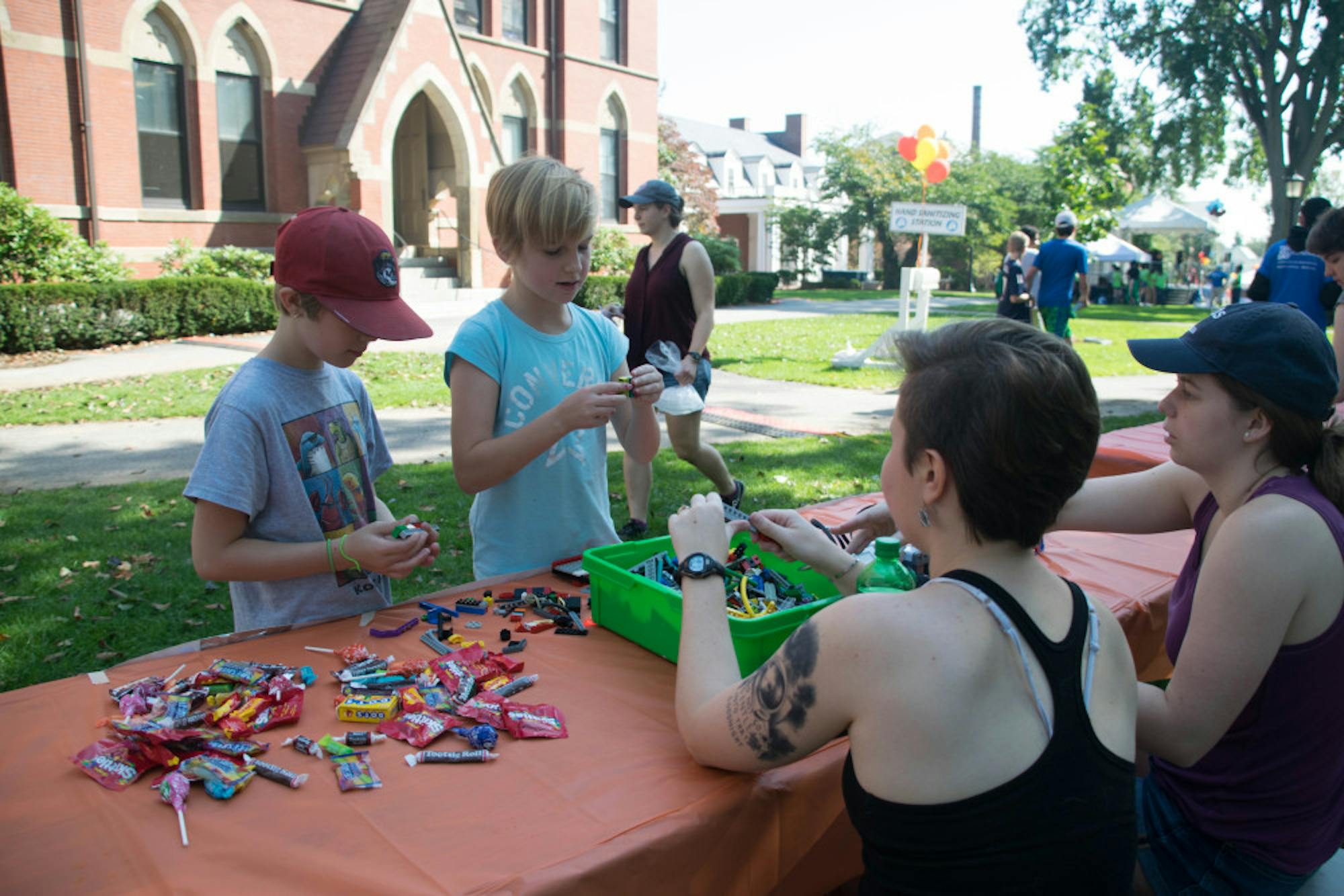When Massachusetts became the first state in the U.S. to formally add engineering to its K-12 curriculum framework in 2001, the Center for Engineering Education and Outreach (CEEO) at Tufts was already a key player in engineering education. Established in 1996 within the School of Engineering, the CEEO had already been researching engineering education for five years and had helped lead the campaign to add engineering to the Massachusetts K-12 standards.
“At the time, it was super new for K-12 — it wasn’t a thing,” Merredith Portsmore, director of the CEEO, said.
With the new, revised 2001 frameworks in place, the CEEO began to increase its outreach efforts to meet the new demand for STEM.
“The phone started ringing off the hook with teachers going ‘We want to do this! This sounds great! But we don’t know what to do and we don’t have any stuff!’” Portsmore said.
Portsmore started the Student Teacher Outreach Mentorship Program (STOMP) within CEEO, putting together a team of undergraduates and graduate students to run hands-on engineering projects in local elementary schools.
Now, almost 19 years later, STOMP has grown, employing over 50 paid undergraduate and graduate student teaching fellows to meet the ever-growing demand for more STEM education. This reflects a larger trend in STEM education and jobs in the U.S. The Pew Research Centerreported that from 1990 to 2018, STEM jobs grew 79%.
The STOMP Fellows, or STOMPers as they are known, teach in pairs once a week for one hour. STOMPers generally work with third to fifth grade students. Classroom teachers apply to have STOMP come to their classes. All of the lessons try to get students to think like engineers and do a hands-on activity.
Since a central goal of CEEO is to provide resources to the communities neighboring Tufts, most of the participating schools are located near the Medford/Somerville and Boston campuses. According to CEEO Director of Outreach Programs Elissa Milto, this semester STOMP is in Arthur D. Healey School and West Somerville Neighborhood School in Somerville, Brooks Elementary School and Columbus Elementary School in Medford, Josiah Quincy Elementary School in Boston and Linden-STEAM Academy in Malden.
In the past, STOMP had a database of previously-used lessons and activities that fellows could choose from for their weekly lessons, or they could create their own.
“You can create your own lessons — and that’s kind of the beauty of STOMP in my eyes, is that creativity and iteration that we get as novice instructors,” senior Liz Moison said.
Moison, who is studying sociology and education, has been involved with STOMP since her first year at Tufts.
“There’s a little bit of freedom, but there’s also that element of support for...when I don’t have the energy to plan something when it’s final weeks or midterms week and I need to go into this classroom,” Moison said.
Recently however, Milto, who directly oversees STOMP, has been working with the STOMPers to specifically tailor lessons that span several weeks, which research and experience have shown work better.
“One week isn’t enough because they don’t have time to iterate,” Milto said, referring to the cyclic process of engineering design. “It’s unrealistic to expect that students are going to be able to finish something in 40 minutes.”
Although not required, STOMPers can also coordinate with the classroom teachers to do lessons on relevant topics.
“If they’re learning about the Earth, maybe tectonic plates, maybe we can build disaster-proof structures,” Moison said. “Or maybe if they’re learning about animals and food chains, maybe we can do an animal engineering or like biomimetics activity.”
With the field of STEM growing rapidly in the past two decades, the mission of CEEO to teach engineering skills in K-12 has become more commonplace, too. Portsmore estimated there are between 50–100 similar outreach centers and programs at universities in the U.S., which try to expose kids to engineering early on.
A private university like Tufts plays a complicated role in providing outreach for public schools, especially in terms of funding. While CEEO receives grants from organizations such as the National Science Foundation, STOMP relies primarily on donations for its operating expenses.
“We’ve been super lucky to have had Tufts alums and other folks make gifts to the program to support [STOMP], but a lot of folks don’t see it as a direct way of impacting the community to donate to a private university,” Portsmore said.
The program is generally received well by both classroom teachers and students.
“The kids like it because it’s not just doing work,” STOMPer and sophomore Collin Geary said. “They love building things, and it’s more hands-on.”
STOMP allows young students to be introduced to engineering, regardless of whether it is a field they will enter in the future.
“The goal isn’t to make every kid an engineer, because some kids don’t want to be engineers, and that’s cool. We just want to introduce these things to younger students. I think there are some kids who do want to be engineers now, too," Geary said.
Overall, STOMP provides a place for students to try out engineering in a low-stakes, engaging environment. The hope is that students have a chance to at least learn about what engineering is and gain something from that experience, even if they do not want to become engineers.
“I’m not saying we’re solving all the societal hurts of the world when we come in with our cardboard and our LEGOs, but there’s something about STOMP and engineering where we’re not asking you for grades, we’re never going to punish you, we’re never going to have these expectations for you…It’s a space where you can engage in valuable, empowering learning experiences that you have agency over,” Moison said.
Through STOMP, Tufts students bring engineering to local schools

Community members construct Lego structures at the table for the Center for Engineering Education Outreach on community day on Sept. 24, 2017.





